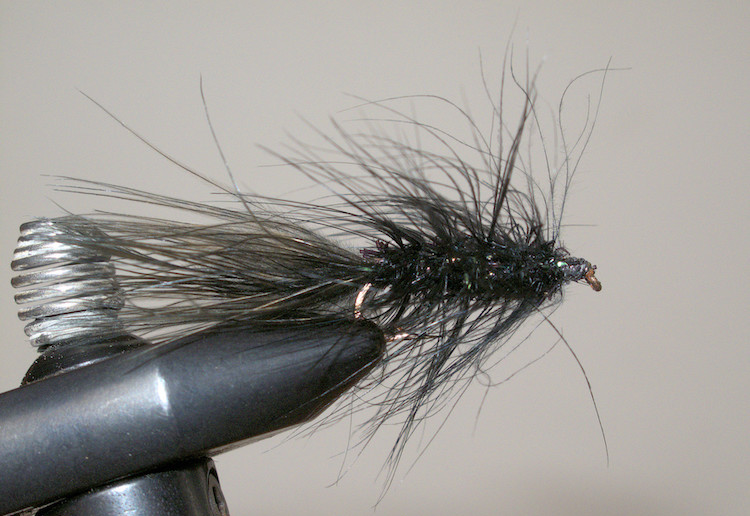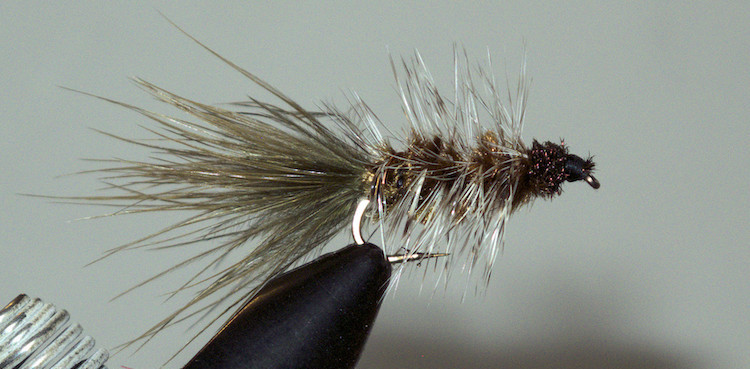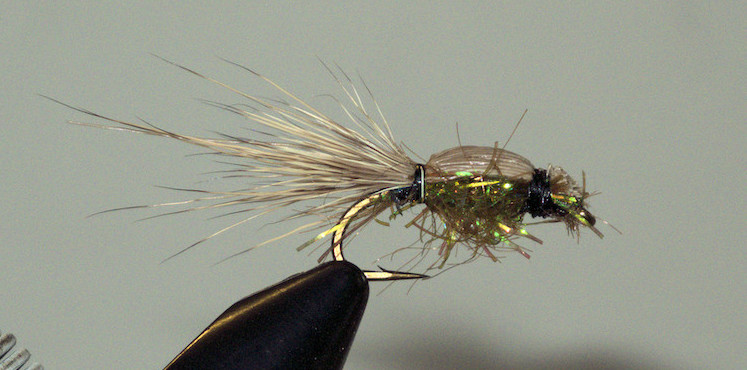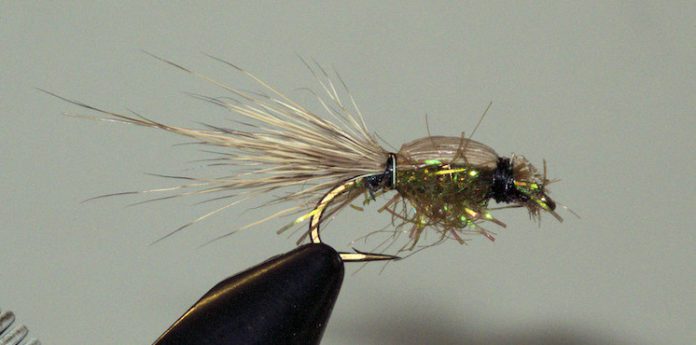For many anglers, catching trout in the heat of summer is an oxymoron; it just doesn’t happen. Most simply pack up their gear and go swimming or boating, waiting for fall and cooler waters instead of putting in the time and effort fishing the dog days. There are, however, those of us who like a challenge and love to fish. We prefer to continue flogging the water in the hopes of coercing just one more trout to bite. Unfortunately, most trout are just not interested, preferring to lie on the bottom and sulk.
It’s a good idea to take some time to analyze the situation and figure out what food is available to the trout at this time. Depending upon the waters you plan to fish, leeches, sculpins, stickleback, waterboatmen, crustaceans such as scuds and crayfish, and the ever-present dragonfly nymphs are usually all available to some degree during the summer months.
The second thing you should do is fish with something that will catch the fish’s attention. Patterns that “swim” or move always work better than other flies, unless there is a hatch, and this is especially true during the heat. Patterns that are tied from soft, flowing materials that impart life to the fly attract fish with much greater regularity than stiff, non-moving patterns. Flies tied from long hen hackle or marabou work very well.

The black woolly bugger is an excellent fly that incorporates both of these materials. This fly outfishes all others by a large margin, especially during slow times; it makes an excellent leech imitation. An excellent variation of the standard black woolly bugger is an olive and grizzly version called the Twig Pig. It was invented by a fishing buddy of mine who works as an enforcement officer for the Ministry of Forests, Lands, and Natural Resource Operations (thus the name).

You can also try dressing up some other old standards with a bit of color or flash. Try tying the woolly bugger with a yellow body. I did, and it took fish when the black one failed. Try tying with the newer flashy materials like sparkle chenille in place of standard chenille. The little Crystal Scud is tied with just crystal chenille and trimmed on three sides, and it outfishes standard scud patterns all the time. Add a bit of silver or gold rib to your pattern. Sometimes adding a few strands of flashabou or crystal flash to the tail of a leech is all you need to catch the fish’s eye.
Don’t forget the warm water fisher’s secret weapons … the attractors. An attractor is a pattern that doesn’t imitate any specific insect or food, but has components that look a little like a lot of different things. BC’s own Doc Spratley is a classic attractor and has proven itself effective year after year. In small sizes, it is often mistaken for a chironomid or mayfly nymph and in larger sizes it makes a passable dragonfly nymph. Tied in various colors of black, green or red, it can be used to imitate many of the trout’s foodstuffs.

All this information and the tying and fishing of different patterns is fine and dandy, but fished wrong they still won’t catch fish. There is an old adage that you all should commit to memory, for it is as true as the day is long: “If the fish are not at the top, then they are on the bottom.” Trout don’t have a lot of reasons to hang around in the middle of the water column. The trout will feed at or near the surface during insect hatches if the current is not too strong nor the stream too deep. When there are no hatches however, the vast majority of potential food is on the bottom in the weeds and cooler water, and the fish head there. Get your fly down to the fish, put it in front of their nose, and keep it there as long as possible. Fish will often strike out of frustration and anger, even when they are not feeding. Running salmon are a good example of this.
Summer is a great season. The mosquitoes are all but gone, the air is warm, the days are long, and the trout are cleaned up from the spawn. Successfully fishing this time of year isn’t rocket science, but you must take time to understand the rules before trying to play the game. Of course, you can always go swimming.






